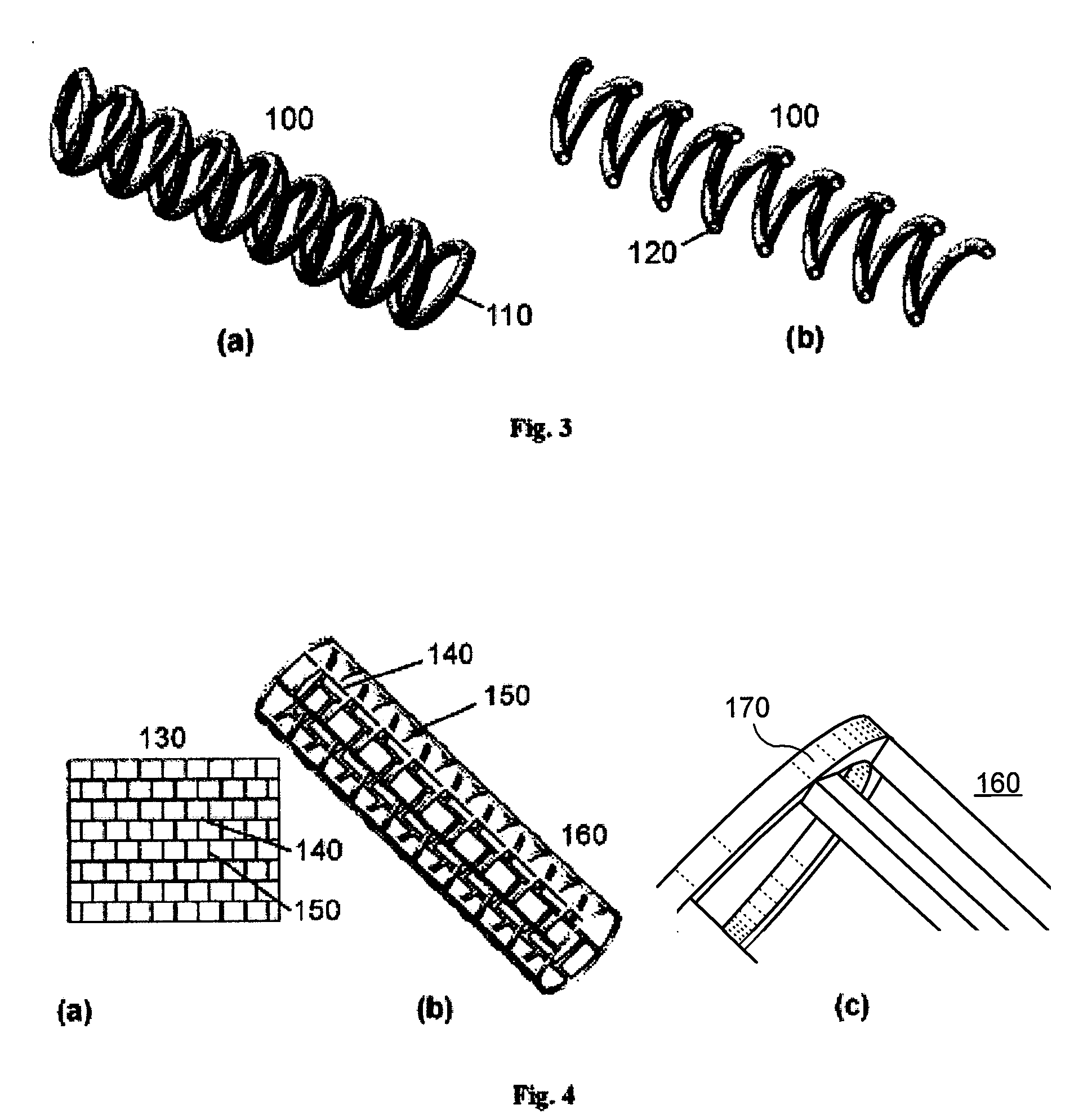Reservoir implants and stents
a technology of stents and implants, applied in the field of medical implants, can solve the problems of short diffusion length for discharging into the surrounding tissue, reduced flow cross-section of the vessel lumen, and more traumatic deposition of the stent, and achieve the effect of increasing the effective volume of spa
- Summary
- Abstract
- Description
- Claims
- Application Information
AI Technical Summary
Benefits of technology
Problems solved by technology
Method used
Image
Examples
Embodiment Construction
[0013]It is one object of the present invention to provide an implant, preferably a stent, which is capable of releasing active ingredients, such as a drug or a marker or a diagnostic agent etc. A further object of the present invention is to provide an implant design that allows increasing the effective volume of space usable as a reservoir for active ingredients. Another object of the present invention is to provide an implant design that allows providing at least two different lumens usable as reservoirs for active ingredients.
[0014]A still further object of the present invention is to provide an implant that can be used as a device for controlled release of active ingredients. Another object of the present invention is to provide multifunctional implants which can be modified in their material properties, particularly the physical, chemical and biologic properties, e.g. biodegradability, x-ray and MRI visibility or mechanical strength. Another object of the present invention is ...
PUM
 Login to View More
Login to View More Abstract
Description
Claims
Application Information
 Login to View More
Login to View More - R&D
- Intellectual Property
- Life Sciences
- Materials
- Tech Scout
- Unparalleled Data Quality
- Higher Quality Content
- 60% Fewer Hallucinations
Browse by: Latest US Patents, China's latest patents, Technical Efficacy Thesaurus, Application Domain, Technology Topic, Popular Technical Reports.
© 2025 PatSnap. All rights reserved.Legal|Privacy policy|Modern Slavery Act Transparency Statement|Sitemap|About US| Contact US: help@patsnap.com



